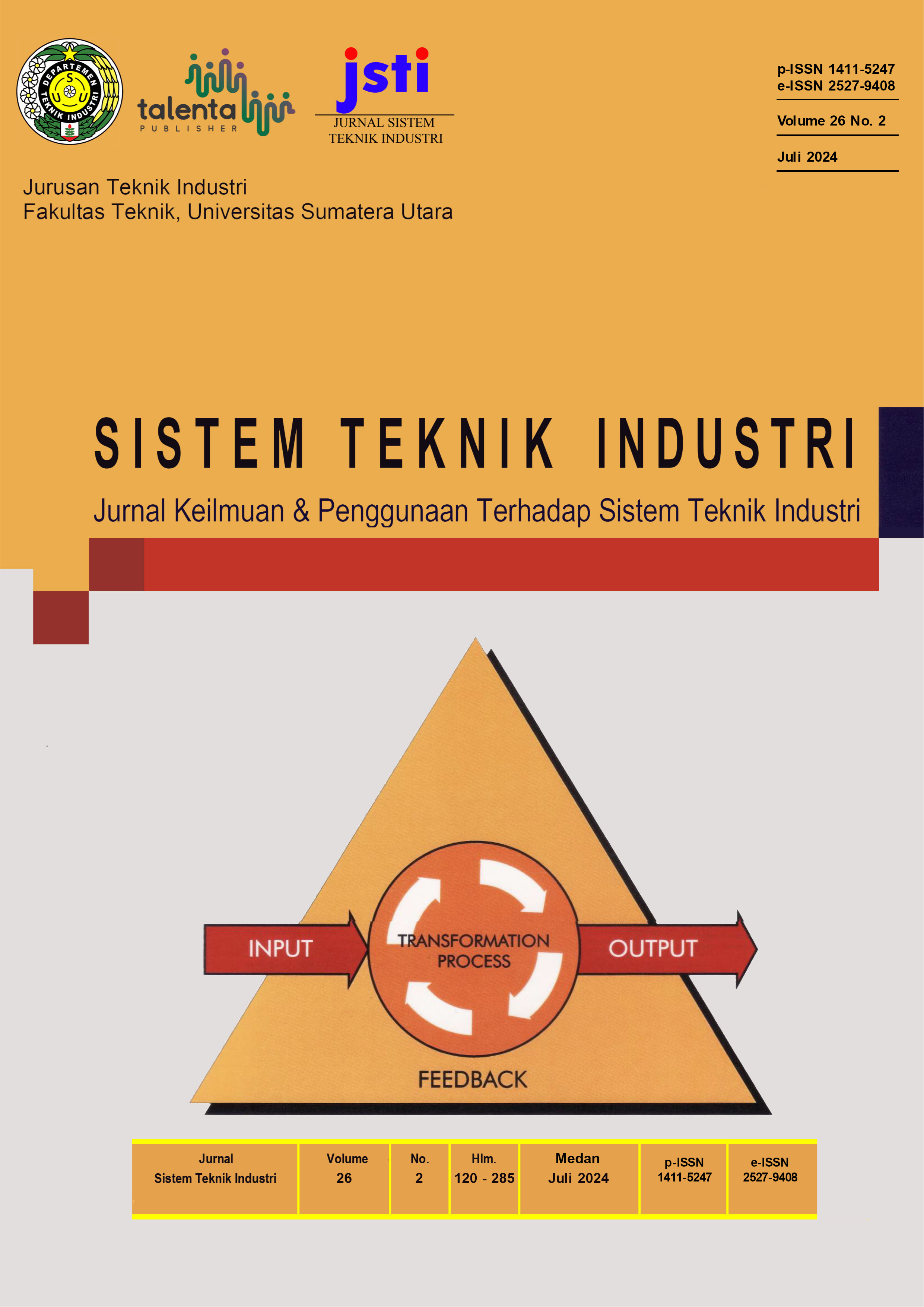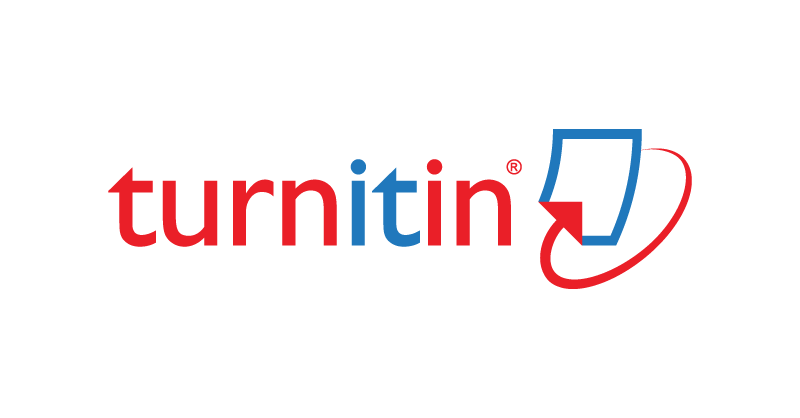Integration of Value Engineering for Design for Assembly in Product Design: A Comprehensive of Literature Review
DOI:
https://doi.org/10.32734/jsti.v26i2.15268Keywords:
Design for Assembly, Literature Review, Product Design, Value EngineeringAbstract
This study explains the benefits obtained from the integration of Design for Assembly (DFA) and Value Engineering (VE) methods in the product design process. DFA is proven to provide benefits such as product simplification, reduced assembly costs, and improved quality by creating product structures that are simpler and easier to install. While VE adds value by taking into account the replacement of expensive or difficult-to-assemble components, speeding up overall assembly time. Although specific research on the integration of these two methods may be limited, studies show that the combination of DFA and VE produces design alternatives that consider various aspects of the product life cycle. The result is reduced costs, faster development times, and a reduced need for rework. The concepts and benefits of integrative DFA and VE approach can be an effective strategy for enhancing assembly efficiency and reducing production costs in product design.
Downloads
References
V. H. Purbani and S. B. Santoso, “Analisis Pengaruh Persepsi Harga, Kualitas Produk, Diferensiasi Produk, Kualitas Layanan dan Promosi Terhadap Keputusan Pembelian (Studi pada Konsumen Larissa Aesthetic Center Semarang),†Diponegoro J. Manag., vol. 2, no. 3, pp. 1–9, 2013.
M. Azalia and D. L. Mendrofa, “Perbaikan Produk Blender Portable dengan Menggunakan Metode Design for Manufacturing and Assembly (DFMA),†Talent. Publ., vol. 6, no. 1, 2023, doi: 10.32734/ee.v6i1.1798.
M. Makovac and P. Butala, “The Role of DFA in Product Development - An Industrial Case Study,†IFAC Proc. Vol., vol. 31, no. 7, pp. 129–134, 1998, doi: 10.1016/s1474-6670(17)40269-2.
C. Favi, M. Germani, and M. Mandolini, “Development of complex products and production strategies using a multi-objective conceptual design approach,†Int. J. Adv. Manuf. Technol., vol. 95, no. 1–4, pp. 1281–1291, 2018, doi: 10.1007/s00170-017-1321-y.
X. T. Song, J. Y. Kuo, and C. H. Chen, “Design methodologies for conventional and additive manufacturing,†Digit. Manuf. Ind. “Art to Part†3D Addit. Print., pp. 97–144, Jan. 2022, doi: 10.1016/B978-0-323-95062-6.00007-3.
A. Sitepu and D. Brilioneristen, “Penerapan Design For Manufacturing And Assembly (DFMA) Pada Jam Dinding,†J. Energy dan Eng., vol. 6, no. 1, pp. 183–191, 2023, doi: 10.32734/ee.v6i1.1803.
R. Askar, L. Bragança, and H. Gervásio, “Design for Adaptability (DfA)—Frameworks and Assessment Models for Enhanced Circularity in Buildings,†Appl. Syst. Innov., vol. 5, no. 1, pp. 1–25, 2022, doi: 10.3390/asi5010024.
U. Ibusuki and P. C. Kaminski, “Product development process with focus on value engineering and target-costing: A case study in an automotive company,†Int. J. Prod. Econ., vol. 105, no. 2, pp. 459–474, 2007, doi: 10.1016/j.ijpe.2005.08.009.
A. Tehmono and G. B. Suprayoga, “Pengaruh Konteks Kelembagaan Dalam Penerapan Rekayasa Nilai Pada Proyek Jalan Nasional,†J. HPJI (Himpunan …, vol. 9, no. 2, pp. 115–128, 2023, [Online]. Available: https://journal.unpar.ac.id/index.php/HPJI/article/view/7009%0Ahttps://journal.unpar.ac.id/index.php/HPJI/article/download/7009/4083
D. Dhounchak and L. K. Biban, “Total Quality Management and Its Impact,†Int. J. Sci. Res. Mech. Mater. Eng., vol. 1, no. 1, pp. 15–17, 2017, [Online]. Available: http://digilib.uinkhas.ac.id/15832/1/TQM %26 Its Impact.pdf
G. Lewis, “Product Design For Manufacturing and Assembly (DFM&A),†3rd ed., Maynard, Massachusetts: Digital Equipment Corporation, 2006.
A. N. Aini, “Perancangan Ulang Proses Produksi dengan Pendekatan Value Stream Mapping Untuk Pressure Vessel 421 Psi,†p. 123, 2019, [Online]. Available: https://repository.its.ac.id/62062/1/02411650012006-Master_Thesis.pdf
A. I. Syah Tjaja, R. P. Astomo, and R. -, “Usulan Perbaikan Peracangan Produk Smart Light Menggunakan Metode Design for Assembly Boothroyd-Dewhurst,†J. Rekayasa Hijau, vol. 1, no. 3, pp. 208–220, 2018, doi: 10.26760/jrh.v1i3.1773.
W. A. K. Geoffrey Boothroyd, Peter Dewhurst, Product Design for Manufacture and Assembly, 3rd Editio. Boca Raton: CRC Press, 2010.
M. Irvan, “Fase Pengembangan Konsep Produk Dalam Kegiatan Perancangan dan Pengembangan Produk,†J. Ilm. Fakt. Exacta, vol. 4, no. 3, pp. 261–274, 2011, [Online]. Available: https://journal.lppmunindra.ac.id/index.php/Faktor_Exacta/article/view/55
M. Arif, Bahan Ajar Rancangan Teknik Industri, 1st ed. Yogyakarta: Deepublish, 2016.
G. Boothroyd, P. Dewhurst, and W. A. Knight, “Research program on the selection of materials and processes for component parts,†Int. J. Adv. Manuf. Technol., vol. 6, no. 2, pp. 98–111, 1991, doi: 10.1007/BF02601434.
Rosnani Ginting, Metode Perancangan Produk (Konsep & Aplikasi). Medan: USUpress, 2022.
D. R. Kiran, Total Quality Management Key Concepts and Case Studies. Oxford: BS Publications, 2016.
A. Gunawan, “Pengaruh Perceived Quality, Perceived Value, dan Brand Personality terhadap Brand Loyalty dari Produk Fashion Cotton-On di Surabaya,†J. Strateg. Pemasar., vol. 6, no. 2, pp. 1–10, 2019.
E. L. Kumrotin and A. Susanti, “Pengaruh Kualitas Produk, Harga, Dan Kualitas Pelayanan Terhadap Kepuasan Konsumen Pada Cafe Ko.We.Cok Di Solo,†J-MIND (Jurnal Manaj. Indones., vol. 6, no. 1, p. 1, 2021, doi: 10.29103/j-mind.v6i1.4870.
K. A. Makrufi, “Analisis pengaruh quality product dan brand image (citra merek) serta marketing strategic terhadap keputusan pembelian processor intel.,†no. 17, pp. 60–72, 2009, doi: 10.31812/apd.v0i17.1879.
Toheri, W. Winarso, and A. A. Haqq, “Where exactly for enhance critical and creative thinking: The use of problem posing or contextual learning,†Eur. J. Educ. Res., vol. 9, no. 2, pp. 877–887, 2020, doi: 10.12973/eu-jer.9.2.877.
J. Moultrie and A. M. Maier, “A simplified approach to design for assembly,†J. Eng. Des., vol. 25, no. 1–3, pp. 44–63, 2014, doi: 10.1080/09544828.2014.887059.
A. S. Kembuan, J. Tjakra, and D. R. . Walangitan, “Penerapan Value Enginnering pada Proyek Pembangunan Gereja GMIM Syaloom Karombasan,†J. Sipil Statik, vol. 4, no. 2, pp. 95–103, 2016.
N. Faria and R. Adipratama, “Kombinasi Metode Vave (Value Analysis Value Engineering) Dan Triz: Studi Kasus Pada Perancangan Shock Absorber,†J. INOVTEK POLBENG, vol. 10, no. 1, pp. 42–50, 2020, [Online]. Available: https://uisi.ac.id/assets/upload/media/a8ba7b7a7c8b6f5134b81a09588f8b1d.pdf
A. T. E. Nayoan, “Pemodelan Kebutuhan Tenaga Kerja Proyek Konstruksi di Provinsi Jawa Barat,†p. 104, 2020.
M. E. Nazarudin and A. Suryadi, “Pengembangan Produk Wastafel Portable Secara Manual Dengan Metode Design for Manufacture and Assembly (Dfma),†Juminten, vol. 2, no. 2, pp. 36–47, 2021, doi: 10.33005/juminten.v2i2.228.
H. I. N. Mariantha, Manajemen Biaya (Cost Management). Makassar: Celebes Media Perkasa, 2018.
S. Smith, G. Smith, and Y. T. Shen, “Redesign for product innovation,†Des. Stud., vol. 33, no. 2, pp. 160–184, 2012, doi: 10.1016/j.destud.2011.08.003.
G. Boothroyd, “Design for Assembly- The Key to Design for Manufacture,†vol. 2, no. 3, pp. 3–11, 1987.
G. Q. Huang, Design for X: Concurrent Engineering Imperatives. Berlin: Springer Science & Business Media., 2012.
P. H. P. Setti, O. Canciglieri Junior, and C. C. A. Estorilio, “DFA concepts in a concurrent engineering environment: A white goods case,†Concurr. Eng. Res. Appl., vol. 29, no. 2, pp. 169–182, 2021, doi: 10.1177/1063293X20985531.
D. A. Saputra and A. Suryadi, “Pengembangan Produk Penjemur Pakaian Portable Anti Hujan dengan Metode Design For Assembly (DFA) dan Pahl and Beitz,†Juminten, vol. 2, no. 6, pp. 1–12, 2021, doi: 10.33005/juminten.v2i6.333.
P. J. Sitindaon, “Rancang Bangun Sistem Pengendalian On/Off pada Mesin Fan di Area Produksi di PT Pegatron.,†2023.
P. H. P. Setti, O. Canciglieri Junior, and C. C. A. Estorilio, “Integrated product development method based on Value Engineering and design for assembly concepts,†J. Ind. Inf. Integr., vol. 21, no. January, 2021, doi: 10.1016/j.jii.2020.100199.
J. Y. Farsi and N. Hakiminezhad, “The integration of QFD technique, Value Engineering and design for manufacture and assembly (DFMA) during the product design stage,†Adv. Environ. Biol., vol. 6, no. 7, pp. 2096–2104, 2012.
D. Younker, Value Engineering: Analysis And Methodology. Florida: CRC Press, 2003.
D. D. Lefever and K. L. Wood, “Design for assembly techniques in reverse engineering and redesign,†Proc. ASME Des. Eng. Tech. Conf., vol. 4, no. October, 1996, doi: 10.1115/96-DETC/DTM-1507.
Downloads
Published
How to Cite
Issue
Section
License
Copyright (c) 2024 TALENTA Publisher Universitas Sumatera Utara

This work is licensed under a Creative Commons Attribution-ShareAlike 4.0 International License.
The Authors submitting a manuscript do so on the understanding that if accepted for publication, the copyright of the article shall be assigned to TALENTA Publisher Universitas Sumatera Utara as the publisher of the journal.
Copyright encompasses the rights to reproduce and deliver the article in all forms and media. The reproduction of any part of this journal, its storage in databases, and its transmission by any form or medium will be allowed.



















